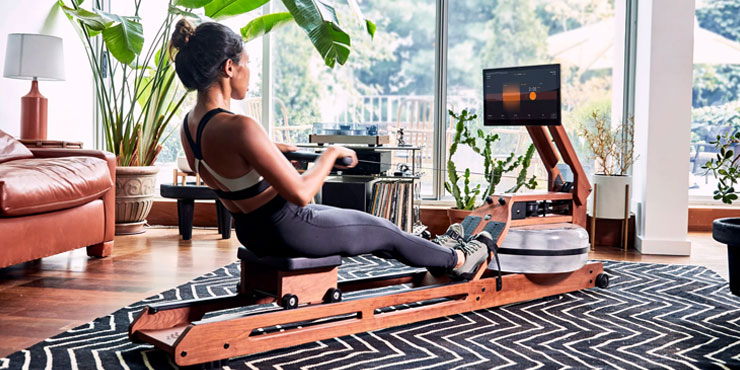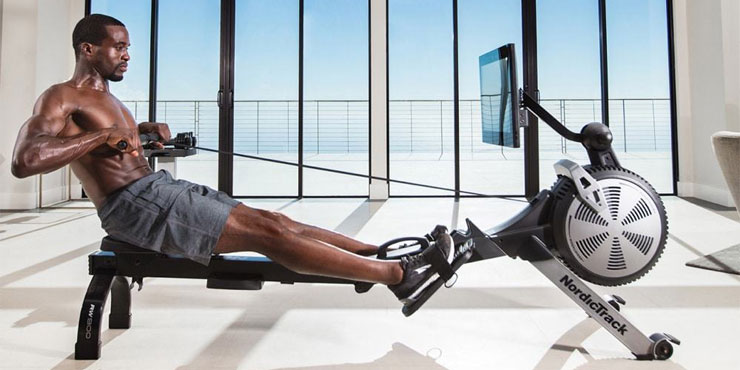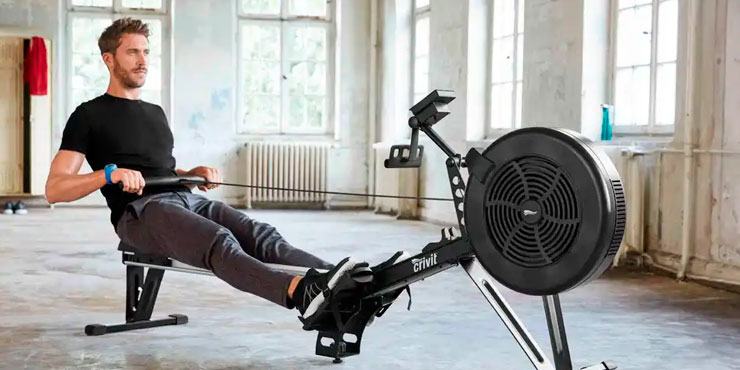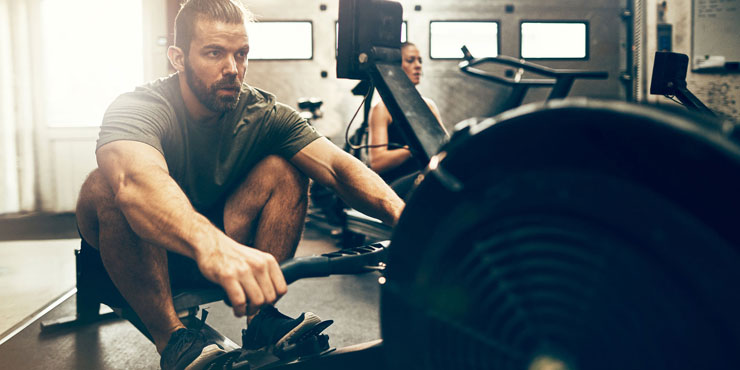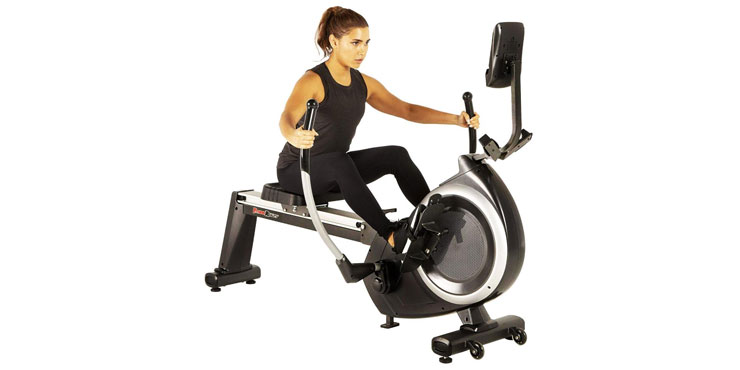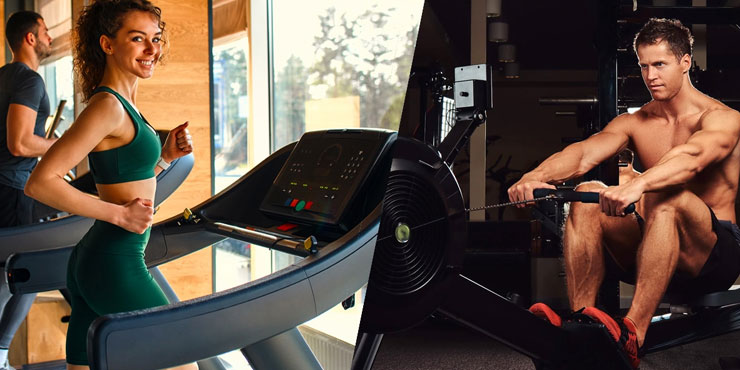How to Make Rowing Machine Quieter
Rowing machines are a popular cardio machine for indoor workouts. The smooth, fluid motion works your arms, back, legs and core in a low-impact yet highly effective exercise. However, one common complaint about rowing machines is that they can be quite noisy, especially in a home gym setting. The repetitive swooshing and mechanical sounds as the seat glides back and forth on the track can be disruptive to you or others in your household.
Excess noise from your rowing machine can detract from your workout experience. The loud sounds can make it difficult to focus, disrupt your pace, or require turning up the volume on your music or TV. This can be frustrating if you’re trying to row while the rest of the household is sleeping or going about their daily activities. For many, the noise pollution ruins the tranquil, zen-like rhythm rowing can provide. The problem is quite common, so we decided to prepare a small How to Make Rowing Machine Quieter guide.
The goal of this зщые is to provide practical tips to reduce the noise from your rowing machine. With a few simple adjustments and maintenance steps, you can keep disturbance to a minimum and row in peace. These solutions will allow you to reap the full benefits of a rowing workout, from the meditative motion to the full-body burn, without the annoying sounds detracting from your experience. Whether you use your rower for high-intensity intervals or low-impact steady state cardio, you’ll be able to get in the zone.
Contents
- Understanding the Causes of Rowing Machine Noise
- Friction Between Moving Parts
- Loose Components
- Lack of Maintenance
- Poor Flooring
- Regular Maintenance for Quieter Rowing
- Lubricate the Chain and Flywheel
- Tighten Bolts and Screws
- Clean the Rowing Machine
- Check for Worn or Loose Parts
- Choosing the Right Location
- Check the Flooring
- Consider Neighboring Rooms
- Distance from Sensitive Spaces
- Test It Out
- Using Noise-Reduction Accessories
- Cushioned Mats
- Anti-Vibration Pads
- Sound Dampening Materials
- Rowing Techniques for Quieter Workouts
- Maintain Steady, Fluid Strokes
- Avoid Abrupt Movements
- Use Proper Rowing Form
- Seeking Professional Help
- When Self-Fixes Fall Short
- Knowledgeable Technician Guidance
- Customized Solutions
- Conclusion
Understanding the Causes of Rowing Machine Noise
Here is a more detailed breakdown of the common causes of noise from rowing machines:
Friction Between Moving Parts
The main source of noise on a rowing machine comes from friction between the moving components. As the seat glides back and forth on the rail, metal-on-metal contact creates repetitive squeaking or grinding noises. These increase over time as parts wear down or become misaligned. Lubricating the seat wheels and rail with silicone spray can help reduce friction. The chain that connects the handle to the flywheel also needs regular lubrication to prevent squeaks.
Loose Components
Loose bolts, nuts, or fasteners throughout the rowing machine can intensify noises as parts rattle or vibrate while in use. Fully tightening all hardware is key, especially on the seat, footrests, and any covers. Don’t overtighten, but make sure everything is snug. Loose rail bolts are a common culprit of extra noise.
Lack of Maintenance
Regular maintenance like lubricating, tightening, and cleaning your rower goes a long way in preventing excess noise. Dust buildup on the flywheel and in the internal mechanisms creates drag that contributes to louder swooshing. Stay on top of dusting and lubricant reapplication based on your usage and the manufacturer’s recommendations. Replace eroded parts like seat wheels and bearings periodically.
Poor Flooring
Rowing machine placement matters. Hard flooring like wood or tile will amplify vibrations, especially if it’s a bare subfloor underneath. Thick rubber mats or carpeting help absorb noise. Avoid flexing floors that can creak under the rower’s movements. Place on a solid foundation. The right location cuts down on echo and reduces transferred sounds.
Regular Maintenance for Quieter Rowing
Proper maintenance is crucial for keeping your rowing machine running smoothly and quietly. The repetitive motions of rowing can cause components to become misaligned or worn out over time, leading to increased friction and noise. Staying on top of a few simple maintenance tasks will help identify issues before they escalate or become more difficult to fix.
Lubricate the Chain and Flywheel
One of the most important maintenance tasks is regularly lubricating the chain that runs from the handle to the flywheel. Use a lightweight machine oil or lubricant specifically made for fitness equipment. Put a few drops directly on the chain, then run the rower for a minute to work the lubricant into the links. This prevents rust and reduces friction that can cause squeaking.
The flywheel itself can also benefit from lubrication every few months. Remove any dust buildup with a microfiber cloth first. Then apply a thin coating of silicone spray or lithium grease on the metal ridges along the outer edge. This lessens contact drag that amplifies swooshing noises.
Tighten Bolts and Screws
Over time, vibrations from rowing can cause bolts, nuts, screws and other fasteners to become loose. Go over the entire machine and tighten any hardware that has become loose using the appropriate wrench or Allen key. Pay close attention to the rail bolts, footrests, seat and covers. Loose rail bolts are a prime culprit of rattling and movement during a workout. Proper tightening eliminates extraneous noises.
Clean the Rowing Machine
Dirt and dust accumulation contributes to increased friction and noise over time. Give your rower a periodic deep clean, especially in the flywheel housing, seat wheels, chain and rail. Start by wiping down the rails and surface areas with a microfiber cloth. Use a small vacuum attachment to suck up dust in tight spaces. A cotton swab dipped in rubbing alcohol helps clean grime from tiny crevices.
Check for Worn or Loose Parts
When cleaning the machine, inspect the moving components like seat wheels, pulleys and bearings for signs of wear. Wheels or rollers that appear deformed or cracked need replacement. Listen and feel for any rattling that could indicate a loose part. Replacing worn parts prevents further damage.
With regular lubrication, tightening, cleaning and inspection, you can keep your rowing machine running almost like new. Follow the manufacturer’s maintenance timeline, but err on the side of caution when it comes to preventing noise issues.
Choosing the Right Location
Selecting the right location for your rowing machine is crucial to minimizing noise disturbances. This equipment can produce vibrations and sounds that transfer easily through floors and walls if placed improperly. Here are some tips for choosing a suitable setup location:
Check the Flooring
The surface under the rowing machine has a big impact on noise. Harder flooring like tile or wood will amplify the sounds throughout the room and your home. Thick rubber gym mats help absorb vibration, but an area rug on carpet works too. Ensure the floor is level without any flex or bounce. Securely anchor the rower’s stabilizer feet for optimal stability. An uneven setup leads to rocking that makes more noise.
Consider Neighboring Rooms
Think about rooms, bedrooms and common living spaces that share walls or ceilings with your potential rowing area. Try to avoid setup next to bedrooms, nurseries or home office spaces where people work or sleep. The rower’s sounds travelling through walls can disrupt concentration or rest. Locate it in a room buffered from neighbors, like a basement or ground floor space away from upstairs bedrooms.
Distance from Sensitive Spaces
If possible, leave a buffer between the rowing machine and rooms where people congregate and noise would be disruptive. For example, placing it right against a living room wall will transmit every sound into the adjoining space. Allowing even 10 feet of separation can muffle the noise significantly. Closed doors also help block sound transmission between rooms.
Test It Out
If you’re unsure about potential noise transmission in a location, do a trial run. Set up the rowing machine and have someone listen in adjoining rooms while you row at different paces. Don’t be afraid to move it around until you find the sweet spot where noise transfer is minimal. Taking the time to optimize placement will ensure your workouts stay quiet.
With smart flooring choices and room considerations in mind, you can find the ideal setup location for seamless, peaceful rowing without disturbing your household. A little extra forethought goes a long way for noise reduction.
Using Noise-Reduction Accessories
In addition to maintenance and placement, there are various accessories made to further dampen rowing machine noise:
Cushioned Mats
Thick rubber mats designed for home gyms work wonders under rowing machines. The dense, shock-absorbing rubber absorbs vibrations before they transmit through the floor. Use interlocking tiles or rollout mats that cover the entire footprint of the rower. Ensure the surface is flat and secured in place. The cushioning effect cuts down on noise transfer significantly.
Anti-Vibration Pads
Self-adhesive foam or rubber pads can be placed under each foot of the rower to prevent contact noises. They stop the feet from shifting and lift the machine slightly to allow movement. Install them directly on the floor or on top of an existing mat. Stagger the pads to match the foot positions rather than squaring them off.
Examples of materials
When it comes to anti-vibration pads for use in a home gym for elliptical use, there are several options to consider. The following are some of the best options available based on expert reviews and customer feedback:
- Rubber-Cal Elliptical Heavy Duty Floor Mat – Heavy-duty rubber mat designed to reduce noise and vibration
- GenieMat TM – Vibration isolation system designed for treadmills, but can also be used for elliptical machines, Achieves vibration isolation efficiencies up to 99% and over 40dB noise reduction
- Rubber Gym Equipment Mats – Rubber mats designed to stand up to the hard pounding of strenuous running while absorbing loud vibrations
Sound Dampening Materials
For problematic machines, sound dampening sheets or panels may be needed. These can be installed on walls or underneath the rower. Acoustic foam, mass loaded vinyl, canvas sheets, and other noise blocking materials absorb echos and vibrations. Proper installation is key – panels installed too loosely won’t be as effective.
Maintenance is still required when using these tools, but they create an extra barrier to keep rowing as peaceful and quiet as possible. Experiment with different dampening accessories to find the ideal system for your exercise space. The investment pays off in the form of smooth, uninterrupted workouts.
Rowing Techniques for Quieter Workouts
Your rowing technique can either exacerbate or help reduce machine noise. With focus on smooth, controlled motions, you can achieve a quieter workout:
Maintain Steady, Fluid Strokes
The biggest technique factor is avoiding abrupt, jerky movements. Letting the handle crash back on the return or yanking the stroke aggressively creates loud banging and increased vibration. Concentrate on consistent, smooth strokes from the legs to arms. Control the motion to prevent momentum that makes more noise. The calmer your movements, the quieter the machine.
Avoid Abrupt Movements
Sudden movements like quickly popping up off the seat or letting your feet slam back in the footrests cause spikes in noise levels. Try to row in a continuous, even rhythm without rapid changes in force. Allow the seat to slide gently without bumping the rails. Keeping composure limits jarring motions.
Use Proper Rowing Form
Good form translates to efficient, fluid strokes. Sit tall with core engaged and reach long on the drive. Extract the handle smoothly and control return speed. Proper breathing technique also promotes steady pace. Keeping proper alignment and technique will naturally lend itself to more controlled, quieter rowing.
It may take some concentration at first to keep decibel levels down with your rowing motions. But with practice, it will become second nature. Focus on each phase of the stroke and build a rhythm that allows both you and the machine to operate calmly. Keeping things steady and smooth is the secret to quiet technique.
Seeking Professional Help
If you’ve tried all the troubleshooting tips but your rowing machine persists with loud, grating noises, it may be time to seek professional help:
When Self-Fixes Fall Short
Don’t live with unresolved noise issues that disrupt your workouts. Frustration builds when DIY solutions like lubricating, tightening and relocating don’t adequately quiet the machine. Excessive grinding or rattling indicates a problem needing expert service. Seek assistance sooner than later to fix underlying mechanical issues before they worsen.
Knowledgeable Technician Guidance
A qualified fitness equipment technician has the skills and experience to diagnose and correct stubborn noise problems. They’ll assess the machine to pinpoint the root cause, like worn bearings, loose pulleys, or damaged flywheel fins. With the right parts and proper repairs, they can often refurbish the rower to run like new again.
Customized Solutions
A good technician will listen to the specific issues you’re experiencing and measure decibel levels. They can advise on placement tweaks, accessories, parts replacement, or repairs tailored to resolving that particular machine’s ruckus. Your rowing noise solution will be customized rather than a one-size-fits-all approach.
While preventive maintenance should quiet most rowers, don’t live with disruptive levels of noise. Seeking professional service can renew your machine so you can reap the full benefits of rowing in a peaceful setting again.
Conclusion
Having a quiet rowing machine is key to staying focused and finding your rhythm during workouts. Fortunately, there are many DIY solutions covered in this article to significantly reduce noise levels. With proper maintenance like lubricating, tightening and cleaning, you can stop squeaks and rattles in their tracks. Strategic placement on cushioned mats in a buffered room prevents disturbances to households. Devices like vibration pads provide supplemental sound dampening as needed. Adjusting your technique to be smooth and controlled also mitigates noise.
With a few simple fixes, you can transform an annoyingly loud machine into a nearly silent rower. The difference is remarkable – instead of the disruptive sounds competing for your attention, you can immerse fully in your workout. Moving in tranquil, fluid motions is meditative and therapeutic.
When rowing quietly, you reap more of the cardiovascular and strength benefits while also avoiding disruptions at home. Use the tips provided above to make small adjustments that add up to a noise-free rowing experience. The solutions are within reach to row peacefully while respecting those around you. Give them a try and enjoy the sounds of silence as you glide your way to fitness.




